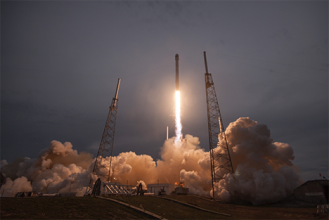Swift Navigation, Carnegie Robotics Partnership to Yield High-Precision GNSS, Inertial Technology Products
 & Carnegie Robotics CTO Chris Osterwood (R).jpg) Swift Navigation CTO Fergus Noble, left, and Carnegie Robotics CTO Chris Osterwood, right. Photo source: Swift Navigation.
Swift Navigation CTO Fergus Noble, left, and Carnegie Robotics CTO Chris Osterwood, right. Photo source: Swift Navigation.A partnership between Swift Navigation and Carnegie Robotics announced this week is expected to yield a line of navigation products for autonomous vehicles, outdoor robotics and machine control.
San Francisco-based Swift Navigation is a startup building centimeter-accurate GPS technology designed to power a world of autonomous vehicles, while Carnegie Robotics, located in Pittsburgh, Pennsylvania, provides advanced robotics sensors and platforms for defense, agriculture, mining, infrastructure and energy applications.
By Inside GNSS












